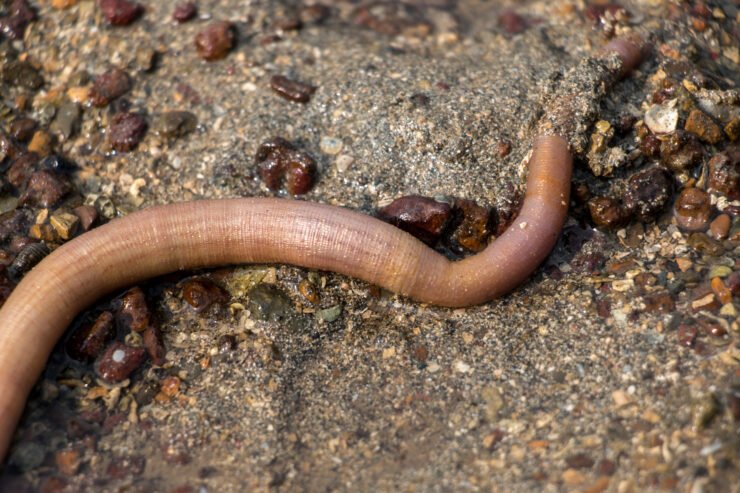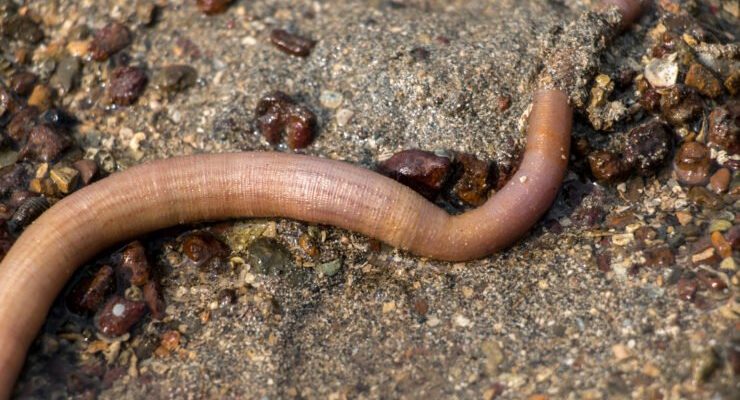
You might be wondering how something so simple as mucus can be so significant. Well, let’s take a closer look at the world of ribbon worms and discover the different ways they utilize this gooey substance to their advantage. With everything from how it helps them move to protecting them from predators, you’ll be surprised at how vital mucus is in their everyday lives.
What Are Ribbon Worms?
Ribbon worms, or **Nemertea**, are a unique group of invertebrates that can be found in various marine habitats, from tide pools to deep ocean floors. They come in various shapes and sizes, typically long and slender, with some species reaching up to 30 feet in length! Their bodies are soft and gelatinous, which makes them look like a ribbon floating in water—hence their name.
These worms have a fascinating anatomy, including a proboscis, a long, tube-like structure they can extend to catch prey. Think of it as a superhero’s gadget, allowing them to snag smaller animals like shrimp and fish. They come in bright colors, which might seem pretty, but it’s often a warning to potential predators.
The Role of Mucus in Movement
Mucus is crucial for ribbon worms, especially when it comes to movement. Imagine trying to crawl on a rough surface without any lubrication. It wouldn’t be easy, right? The same goes for these worms. They secrete mucus to create a slippery environment that helps them glide more smoothly over surfaces like rocks or sandy seafloors.
When ribbon worms move, they often utilize a technique called **peristalsis**. This means they contract and expand their muscles to push themselves forward. But here’s the thing: without mucus, that movement would be much more difficult. The mucus reduces friction and allows them to navigate their environments with ease. It’s like sliding on a slip-and-slide versus trying to crawl on dry pavement!
The Slippery Surface Advantage
With mucus covering their bodies, ribbon worms can also avoid getting stuck in the sand or between rocks. This ability to maneuver effortlessly allows them to explore their surroundings, search for food, and even escape from predators. The mucus forms a protective barrier, keeping their bodies moist, which is vital for their survival.
Without this slippery coating, they’d be vulnerable to getting trapped or injured. So, the next time you think about the humble mucus—remember it’s not just a snotty annoyance; it’s a powerful tool for these long, wiggly beings.
Defense Mechanisms: Mucus as Protection
Now, let’s dive into another critical role that mucus plays for ribbon worms: defense. This slimy secretion isn’t just for movement; it also acts as a shield against predators and harmful bacteria. Picture this: if a predator tries to grab a ribbon worm, the mucus can make it slippery and hard to hold onto, allowing the worm to escape.
Additionally, some ribbon worms can secrete toxic compounds within their mucus. This toxicity serves as a warning signal to predators, telling them to back off. It’s like having built-in pepper spray! These chemical defenses help deter animals looking for an easy meal, allowing the worm to survive another day.
Why Mucus Matters for Survival
The combination of physical and chemical defenses means that mucus is an essential part of a ribbon worm’s survival strategy. If they didn’t have this slime, they would be much more vulnerable to threats. Evolution has fine-tuned their mucus production, making these worms well-adapted to their environments.
Some ribbon worms even use their mucus to create nests or tubes to hide in, providing an extra layer of protection from the external world. It’s a brilliant example of how simple biological materials can play a significant role in survival.
How Ribbon Worms Hunt with Mucus
You might be curious about how ribbon worms use their mucus in hunting, and it’s quite interesting! When a ribbon worm wants to catch prey, it often extends its proboscis, which can be covered in mucus. This slimy layer helps the proboscis to stick to the prey. For a tiny fish or shrimp, getting grabbed by a sticky, gooey worm is a nightmare!
Once the proboscis latches on, the worm can pull its meal closer and consume it. This method is efficient and effective. They don’t just rely on speed; they rely on that gooey catch to make sure they secure their meal every time. It’s like using a fly trap—catching food with careful strategy.
The Hunting Process Explained
Here’s how it typically works:
- The ribbon worm spots potential prey.
- It extends its proboscis, which is coated in mucus.
- When the prey gets close, the proboscis lashes out.
- The mucus helps snag the prey, preventing escape.
- The worm then pulls the prey in and consumes it.
This hunting technique underscores how versatile mucus can be, acting as both a helpful tool for movement and a crucial part of their feeding strategy.
Environmental Importance of Mucus
Ribbon worms don’t just play a role in their ecosystems; their mucus does too. The mucus they secrete can affect the surrounding environment. For instance, when they excrete mucus into the water or around their habitats, it can provide nutrients for tiny microorganisms. This creates a mini-ecosystem that supports a variety of marine life.
Also, the presence of ribbon worms indicates that the environment is healthy. They thrive in clean, oxygenated waters, so spotting them can be a good sign for the ecosystem. By helping maintain the balance of their habitats, these worms contribute to the ocean’s overall health.
Keeping Ecosystems Balanced
This connection shows how every creature, even the slimy ribbon worm, has its place in the grand scheme of things. Mucus might seem insignificant, but it helps these creatures survive and thrive—ultimately ensuring their ecosystems remain balanced.
Overall, the ribbon worm’s use of mucus is a brilliant example of natural adaptation and survival. Without it, they wouldn’t be able to defend themselves, move effectively, or hunt for food.
Ribbon worms may not be the most glamorous creatures in the ocean, but their use of mucus is a testament to nature’s creativity. Whether they’re slipping through the sand, warding off predators, or catching dinner, this slimy substance plays a pivotal role in their daily lives.
So, the next time you think of ribbon worms, remember that their gooey secret is more than just slime—it’s a survival strategy that showcases the intricate balance of marine life. These remarkable creatures remind us that even the simplest things can have a significant impact, turning the ordinary into something extraordinary.

